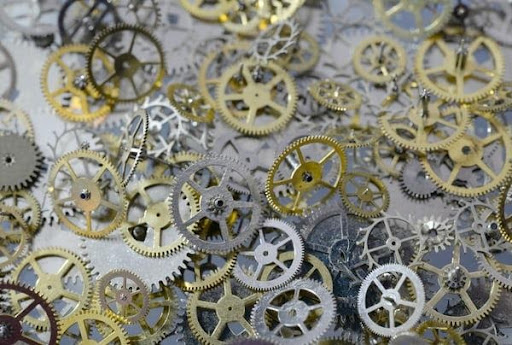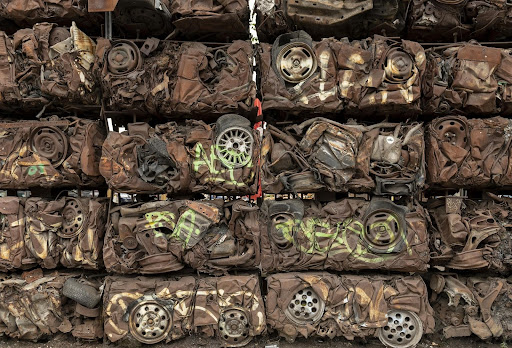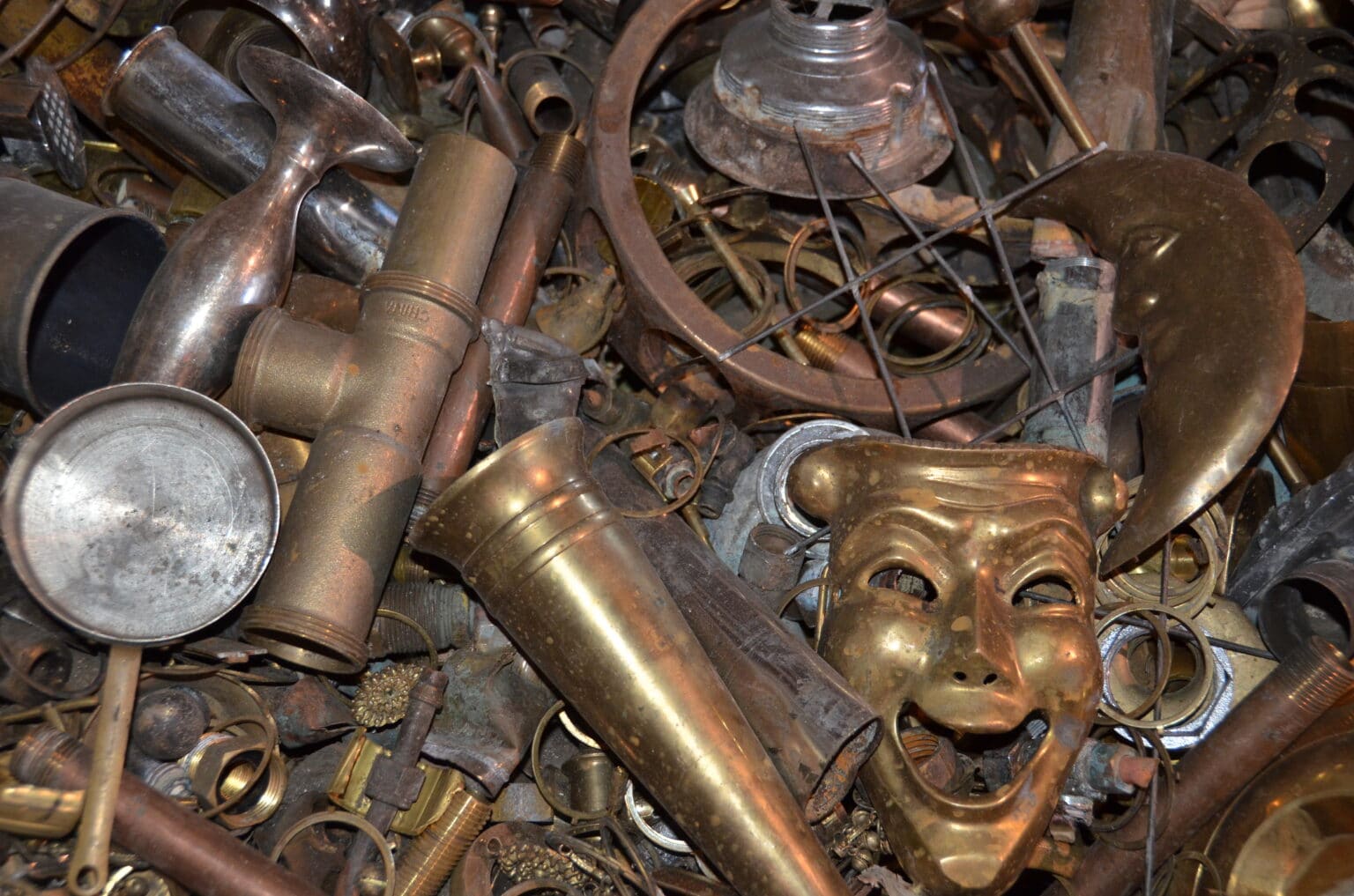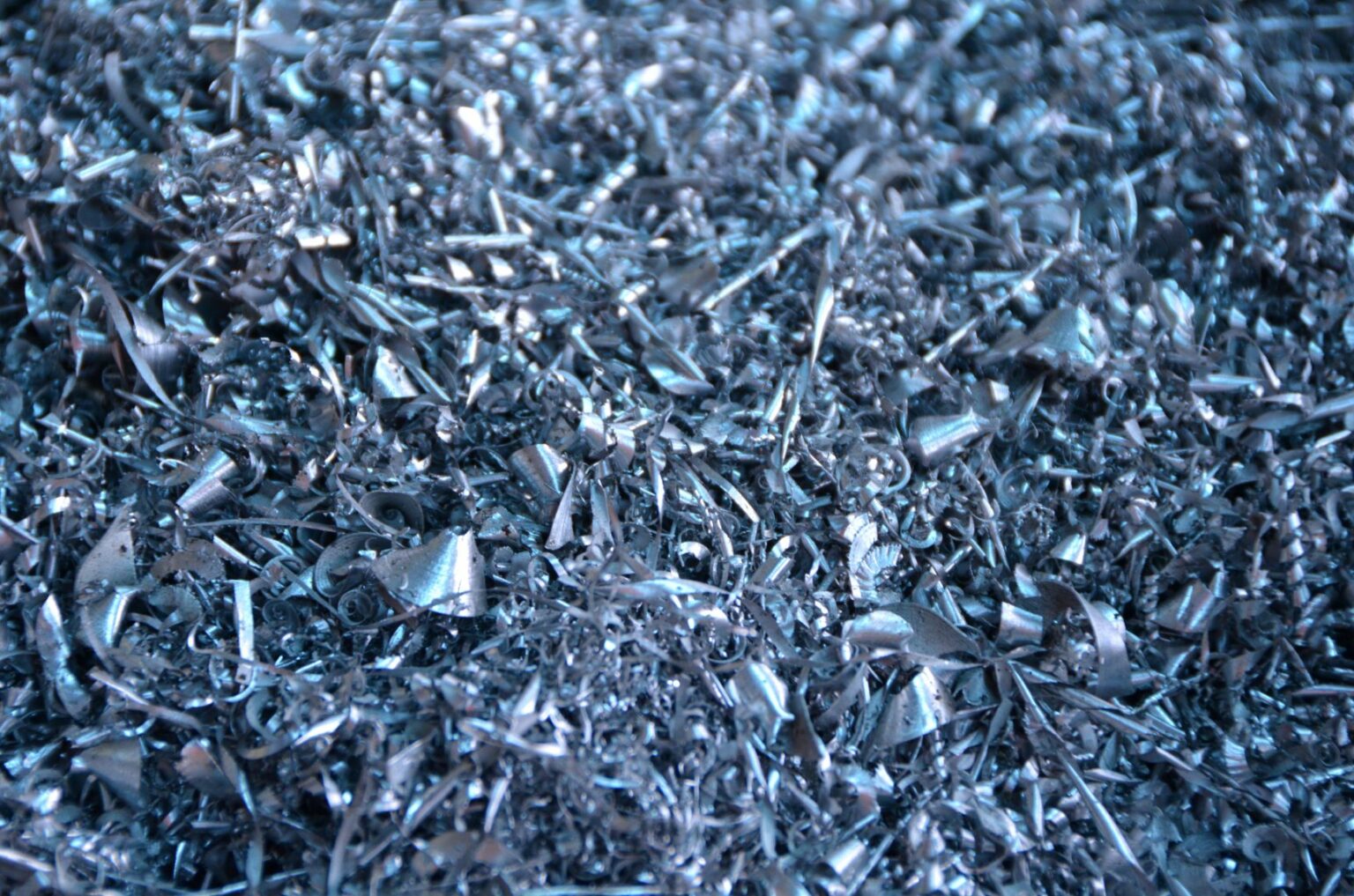There’s recyclable metal all around you, and the two main types are ferrous and non-ferrous metals. Non-ferrous metals generally contain little if any iron and mostly come from minerals, sometimes alloyed or refined through a process known as electrolysis.
The scrap value of non-ferrous metal is typically higher on a pound-for-pound basis than ferrous metal, which is traded in tons, not pounds. This means it’s useful to know some examples of non-ferrous metals and how to identify them before visiting a non-ferrous scrap dealer with your recycling.
HOW TO IDENTIFY NON-FERROUS SCRAP METAL
Because ferrous and non-ferrous metals are processed separately, scrap yards often have different drop-off areas for each type of metal. For example, when you bring non-ferrous items to Cohen, you can bypass the truck scale and proceed directly to the drive-thru to get your items weighed — but this only works if you’ve already sorted your non-ferrous metals from the ferrous ones. So, how do you identify what metals are non-ferrous?
The simplest way to see if a metal is non-ferrous is to use a magnet. If the magnet does not stick, the metal is non-ferrous – meaning, without iron. Some steel is non-ferrous despite all steel being made with iron, because alloying it with other metals can make iron non-magnetic. It is the magnetism that determines whether an item goes in the ferrous or non-ferrous pile. Any household magnet will work, and experienced scrappers often keep one on a keychain to help sort on the go.
Other characteristics of non-ferrous metals are not as easy to test for. Non-ferrous metals are generally more malleable than ferrous, making them easier to machine. The applications are broad, from statues, electronics, jewelry, car parts, and batteries. Since non-ferrous metals lack iron content, they are resistant to rust and corrosion, making them especially well suited to certain uses. They are also lightweight, easy to use in fabrication, often colorful, and typically have good thermal and electrical conductivity.
WHAT ARE THE MOST COMMON NON-FERROUS METALS?
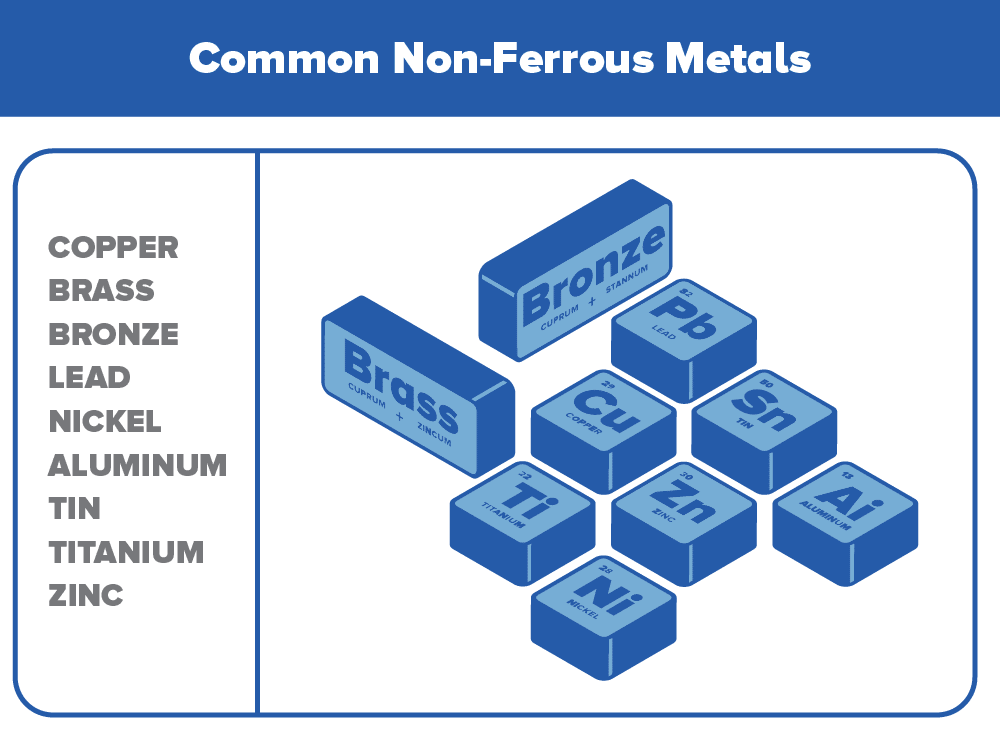
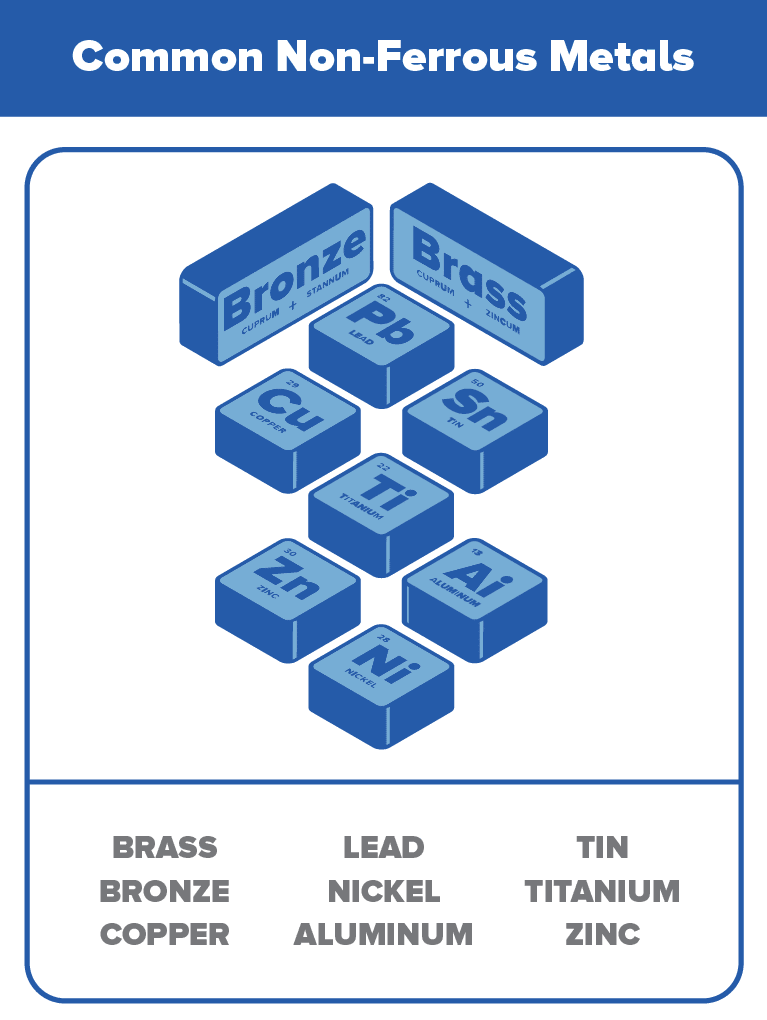
Non-ferrous metals are in nearly everything that has metal components. Common examples include:
- Copper
- Brass
- Bronze
- Lead
- Nickel*
- Aluminum
- Tin*
- Titanium*
- Zinc*
*Some items will have more than one kind of non-ferrous metal or be plated or coated with one of these alloys. While it can help if you do know exactly what kind you have, don’t stress about getting the identification exactly right. The scrap yard personnel will evaluate and categorize your scrap for you if you’re not sure.
Precious metals like mercury, gold, silver, platinum, and zirconium are also non-ferrous, though these are typically traded to specialty dealers who use different units of measurement than other non-ferrous scrap.
Here are 6 of the non-ferrous metals you’re most likely to find, where to find them, and what properties you should look for when identifying them.
ALUMINUM
Many non-ferrous metal recycling yards enjoy working with aluminum because of how easily it’s processed. 75% of all aluminum produced is still in circulation thanks to how much of it can be recycled — 95 to 98%.
Aluminum is lightweight and silvery-white in color. It can easily take on various shapes and be rolled extremely thin. The most familiar aluminum item you’ll likely find is the beverage can. Aluminum can also be found in other items like doors, window frames, electrical components, and cookware like pots, saucepans, and foil — though only clean foil is recyclable.
Car parts such as wheels, radiators, and alternators contain aluminum, as do building materials like siding, structural frames, and roofing sheets. And because of its low weight, it is also useful for making pistons, bicycle frames, boats, and even aircraft. All-aluminum fishing boats can be scrapped (other types of boats may not be as recyclable).
While aluminum isn’t a high-value non-ferrous metal, it’s still a great metal to recycle. Manufacturers can find a new use for it in a very short time. Recycled aluminum saves up to 95% of the energy that manufacturers would have otherwise used to produce new material.
Copper
Copper is a pinkish-red non-ferrous metal that is such a good conductor, it practically surrounds us wherever we are. Its properties include high electrical conductivity, high thermal conductivity, high ductility, and good corrosion resistance.
Copper is most frequently used as an electrical conductor in wiring and motors, but you can also find it in plumbing fittings, roofing material, and cookware. Adding other metals to it creates alloys like bronze and brass, both of which are also common recyclable metals.
Wire is the most commonly recycled copper item, and it comes in several grades based on its gauge and copper content. While insulated wire won’t get you as high of a price as bare wire, it often takes quite some effort to strip off any insulation. If you plan on recycling insulated wire, you’ll have to weigh the trade-off between the effort required and the price you’ll get.
You can also get value out of copper items such as old sheet roofing, copper pots and pans, and decorative items at the scrap yard. Copper pipe is a commonly scrapped item. To get more value from it, cut off any parts that have been soldered and separate them from the clean, unsoldered copper. The soldered joints can still be recycled, but the clean copper will be worth a little more.
BRASS
Brass is an alloy of copper and zinc. It’s commonly yellow-gold with a hint of red. The metal is quite heavy and often used in both home and industrial applications.
The most common types of brass are red brass and yellow brass. Yellow brass is the less valuable of the two, made up of 60 to 70% copper and 30 to 40% zinc, with tin and lead in traces. You’ll find it in things like plumbing, building materials, industrial fittings, specialty machined parts, and musical instruments.
Red brass is somewhat more valuable due to its higher copper content — about 85 to 88%, with the rest coming from lead, tin, and zinc. It’s widely used in industry to make valves, pumps, and sprinklers.
If you’re looking for brass to scrap, look for household items like door handles, light fixtures, bathroom fixtures, ammunition shells, faucets, keys, and railings. It’s also used for furniture and decorative accents, auto parts, and at the ends of copper piping. You can also find brass in common hardware such as nails, screws, nuts, bolts and gears.
Brass can fetch a mid-level price at the scrap yard, but it easily adds up thanks to its density.
BRONZE
Bronze is an alloy primarily consisting of copper and tin, with other metals added depending on the application. It comes in different types and grades, so you’ll see some types with more nickel and steel, while others contain more copper. The ones with more steel and nickel are often less valuable per pound than those with more copper, which are considered purer.
Everyday items with this non-ferrous metal include hardware and fixtures, the strings of musical instruments, automobile parts and tools, springs, and plumbing materials. You’ll also find bronze in architectural decoration and exterior sculptures. The marine industry uses it often as well due to its high corrosion resistance.
In woodworking, bronze wool is preferred over steel wool because it won’t discolor oak. Historically, it was also used to make coins, though most of the reddish-brown coins in circulation today are zinc-based.
Bronze was one of the first alloys ever produced, and its creation launched humanity into what we call the Bronze Age. That makes it important for the accurate reproduction and preservation of historical items.
Lead
Lead is one of the most widely known toxic heavy metals, so you might be surprised to learn it’s also one of the most recycled. Lead is soft and malleable, with low tensile strength and a low melting point, making it a useful metal for alloying. Lead also withstands corrosion from moisture and acids and is non-reactive to many chemicals, making it suitable for construction materials, electrical power cables, batteries, and solder.
Lead is frequently found in items such as bullets, wiring, acid tanks, and weights. Recycled lead is also used for radiation shielding on medical equipment and in the construction industry for roofing.
According to Battery Council International (BCI), lead-acid batteries are the number-one recycled item in the U.S., with a rate of 99.3% However, lead is a toxic metal that can be harmful if contacted directly, so you need to handle any batteries you plan to recycle carefully. Recycling lead is a specialized process because of its toxicity, and the cost of processing it can impact its value at the scrap yard. Scrap yards may charge fees for certain lead-containing items like batteries and old TVs.
NON-FERROUS STEEL ALLOYS
Steel is typically a ferrous metal, because its main ingredient is iron. However, to get different properties like increased hardness or corrosion resistance from steel, it might be combined with non-ferrous metals like zinc or nickel to create an alloy. Specialty alloys are developed for certain industries and applications, like aerospace or medical equipment.
The finished product is still referred to as steel, but it might not stick to a magnet anymore because of the presence of those non-ferrous metals. This can be a little confusing because there’s no way to look at an item and know what metals are in it – and that’s where the magnet test comes in. Putting your items to the magnet test is a surefire way of determining whether what you have is really ferrous or not.
EXCHANGE YOUR NON-FERROUS METALS FOR MONEY
Scrap metal recycling has long been people’s preferred method to get rid of old metal products. Recycling scrap metal is both environmentally friendly and an easy way to make some extra money. For non-ferrous metals in particular thanks to their higher value per pound, recycling is the best way to get rid of old, unwanted metal items.
To recycle your old metal goods, however, you’ll need a reliable scrap yard like Cohen to buy your scrap. Cohen is family owned and operated with several locations in Ohio and Kentucky.
Find a scrap yard near you to get those old gadgets, tools, bicycles, pipe fittings, motors, and other items out of storage and turn them into cash instead of sending them off to the landfill.

